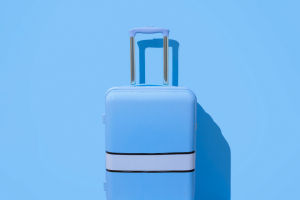Cosmetic packaging is key to keeping products fresh, making them look appealing, and ensuring they are easy for consumers to use.
Among the many materials used, plastics are especially common because they are versatile, cost-effective, and lightweight.
This article will discuss the most common types of plastics used in cosmetic packaging, along with their features, benefits, and uses.
Common Plastic Types in Cosmetic Packaging
1. Polyethylene Terephthalate (PET)
PET is known for being clear, lightweight, and offering good protection against outside elements. It is often used for packaging items like shampoos, lotions, and body washes. PET is easy to recycle, but it does allow some oxygen to pass through, which can reduce the shelf life of certain products.
2. Polypropylene (PP)
PP is popular because it is strong and can handle heat, making it great for products that are packaged while hot. It is commonly used for containers, caps, and lids, especially for items like lip balms and lipsticks. PP also resists chemicals well, which helps keep the products inside safe.
3. High-Density Polyethylene (HDPE)
HDPE is a tough and versatile plastic that offers excellent protection against impacts. It is often used for packaging creams, ointments, and thick lotions. Its strength makes it suitable for a wide range of cosmetic products.
4. Low-Density Polyethylene (LDPE)
LDPE is known for being flexible and easy to squeeze, making it perfect for tubes and bottles that hold products like hair gels, serums, and facial cleansers. It allows for easy dispensing of the product.
5. Polystyrene (PS)
PS is a clear and stiff plastic, commonly used for cosmetic jars and trays. It is ideal for packaging creams, powders, and eye shadows, providing a clear view of the product while keeping its shape.
6. Polyvinyl Chloride (PVC)
PVC is clear and durable, making it suitable for see-through packaging like blister packs for lip glosses and mascaras. However, it is sometimes avoided because it is not as easy to recycle.
7. Acrylonitrile Butadiene Styrene (ABS)
ABS is a strong and impact-resistant plastic often used for cosmetic compact cases and clamshell packaging. Its durability and smooth finish make it a great choice for high-end cosmetic packaging.
8. Polymethyl Methacrylate (PMMA)
Also known as acrylic, PMMA is used for premium packaging like bottles and jars. It offers excellent clarity, UV protection, and a luxurious look, making it popular for high-end products.
9. Post-Consumer Recycled Plastics (PCR)
With increasing focus on the environment, many brands are now using PCR materials, which include recycled plastics. This helps reduce the need for new plastics and supports sustainability in the industry.
Advantages of Plastic in Cosmetic Packaging
• Lightweight: Plastics weigh much less than glass or metal, which reduces shipping costs and energy use.
• Flexible Design: Plastics can be easily shaped into different forms, allowing for creative packaging that looks good.
• Durability: Unlike glass, plastics don’t break easily, making them safer for consumers and reducing product loss during shipping.
• Cost-Effective: Plastics are cheaper to produce, making them an affordable option for manufacturers and keeping prices competitive.
Conclusion
Choosing the right plastic for cosmetic packaging depends on factors like how well it works with the product, how it looks, and sustainability goals. As the cosmetics industry grows, the use of recycled materials and innovative designs will likely become more common, balancing the need for functionality with environmental care. Understanding these plastic types and their uses is important for brands that want to meet consumer demands while being mindful of sustainability.


